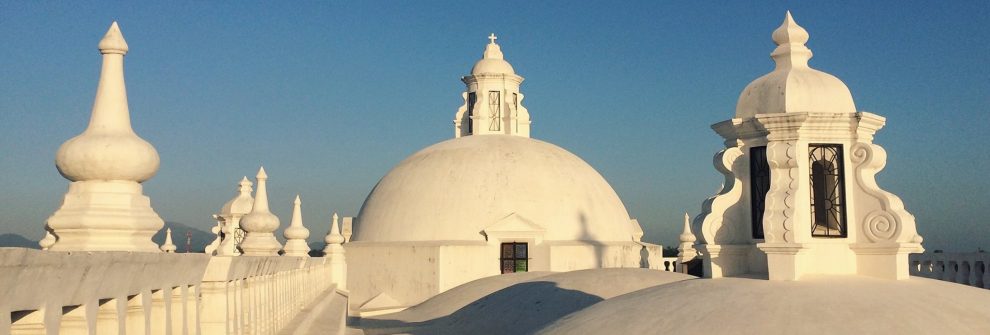Excerpt from a letter written by Hernan Cortes to Charles V in 1519.
Hernan Cortes’ letter describes his stay in a city in Mexico where he and his men were welcomed with open arms by the Indigenous people. We see evidence of this in the first paragraph when Cortes states that the people “came out of the city to greet [him] with many trumpets and drums.” We can also really see that he is an outsider looking in when he continues to describe what he’s observing regarding the priests. He talks about the “many persons whom they regard as priests in their temples.” When I read this phrase, I felt like he was demeaning the Indigenous people because Cortes doesn’t seem to care much about their status amongst the citizens. It sounds as if Cortes isn’t recognizing their status as priests, and rather that he’s saying that they are simply viewed as priests. We also learn that he and his men stayed in very nice living quarters, but that they were unfortunately not being fed very well and that the elites of the city barely came to see and talk with them. I was slightly confused when reading this, but continued to read in hopes that maybe I would better understand if the events were playing out this way for a reason.
In the second paragraph we learn that an Indigenous woman told his interpreter, Marina, that she should escape because Cortes and his men were about to be killed. During the short time Hernan Cortes and his men had been in the city, women and children had escaped with their belongings, and roads leading to the city had been blocked off. Cortes found out about this plotting through Geronimo de Aguilar, who let him in on the conversation that occurred between Marina and the other Indigenous woman. To be 100% sure of what was going on, Cortes questioned a random man he found walking down the street. This man confirmed everything.
Cortes quickly planned an attack. He summoned the elites to his room and left them bound up before the fighting started. Once he left, he had them killed. Cortes then explains to Charles V how well they fought; “…in two hours, more than three thousand men were killed” and that they were “easy to disperse” of. It is in statements like these that Cortes appears to think very highly of himself compared to the Indigenous people. (In regards to my earlier confusion, I think the city elites wanted to weaken Cortes and his men, and to keep them in the dark about what was going on in the city).
Source: Cortes, Hernan. Hernan Cortes to Emperor Carlos V., 1522. In Hernan Cortes: Letters from Mexico. Translated and edited by Anthony Pagden, 72-74. New Haven and London: Yale University Press, 1986.
Personal Account, Bernal Diaz del Castillo
Bernal Diaz del Castillo was with Hernan Cortes during his travels and recalls his story in this personal account.
The first part of this document talks about the relationship between the Spaniards and the Indigenous people in a town called Tabasco. Diaz del Castillo also recalls how kind and welcoming the Indigenous people were upon their arrival, similarly to the first source I discussed. They were given many gifts when welcomed, but the best gifts they received, according to Diaz del Castillo, were twenty women (one per captain), including Dona Marina. During their time in the Americas, they converted many people to Christianity. In this particular case, the Spaniards introduced Christianity through an image of “Our Lady” and by explaining her importance. Within a short period of time, many were baptized and crosses were being carved and put up everywhere. It’s interesting to read about how easily influenced and manipulated the Indigenous people were in this particular account, when it came to converting to Christianity. Going to mass became quickly popular and was attended by everyone. The town of Tabasco was also renamed Santa Maria de Victoria. At one point there was even a procession that everyone participated in.
The second part of this document goes into more detail about Dona Marina who played an enormous role in the Spaniards conquest. Dona Marina was from a town called Paynala, and the daughter of chiefs and Caciques. Her father passed away when she was still a child and her mother remarried and had a son with her new husband. This son was adored by her mother and step-father ad they decided that he would be their successor. Because of this, they gave her “to some Indians from Xicalango and pretended she passed away. From there she was given to the Tabasco people and finally to Hernan Cortes and his men. She was officially given to Alonzo Hernandez Puertocarrero, but lived with Cortes once he returned to Spain. She had a child with him named Don Martin Cortes. Cortes always took her with him on expeditions and during a religious speech one day, Dona Marina’s mother and half-brother were there and “were in great fear of Dona Marina, for they thought that she had sent for them to put them to death.” Instead, she forgave them and gave them gifts.
The reason Dona Marina was so vital for the Spaniards wasn’t because she could speak Spanish, but because she spoke Cuatzacoalcos and Tabasco with the Indigenous people. The tabasco language was in turn, translated to Spanish by Jeronimo de Aguilar who also spoke Tabasco.
Source: Diaz del Castillo, Bernal. Chap. 22-23 in Discovery and Conquest of Mexico, 1517-1521. 1585. Translated by A.P. Maudsley. Noonday Press, 1965.
